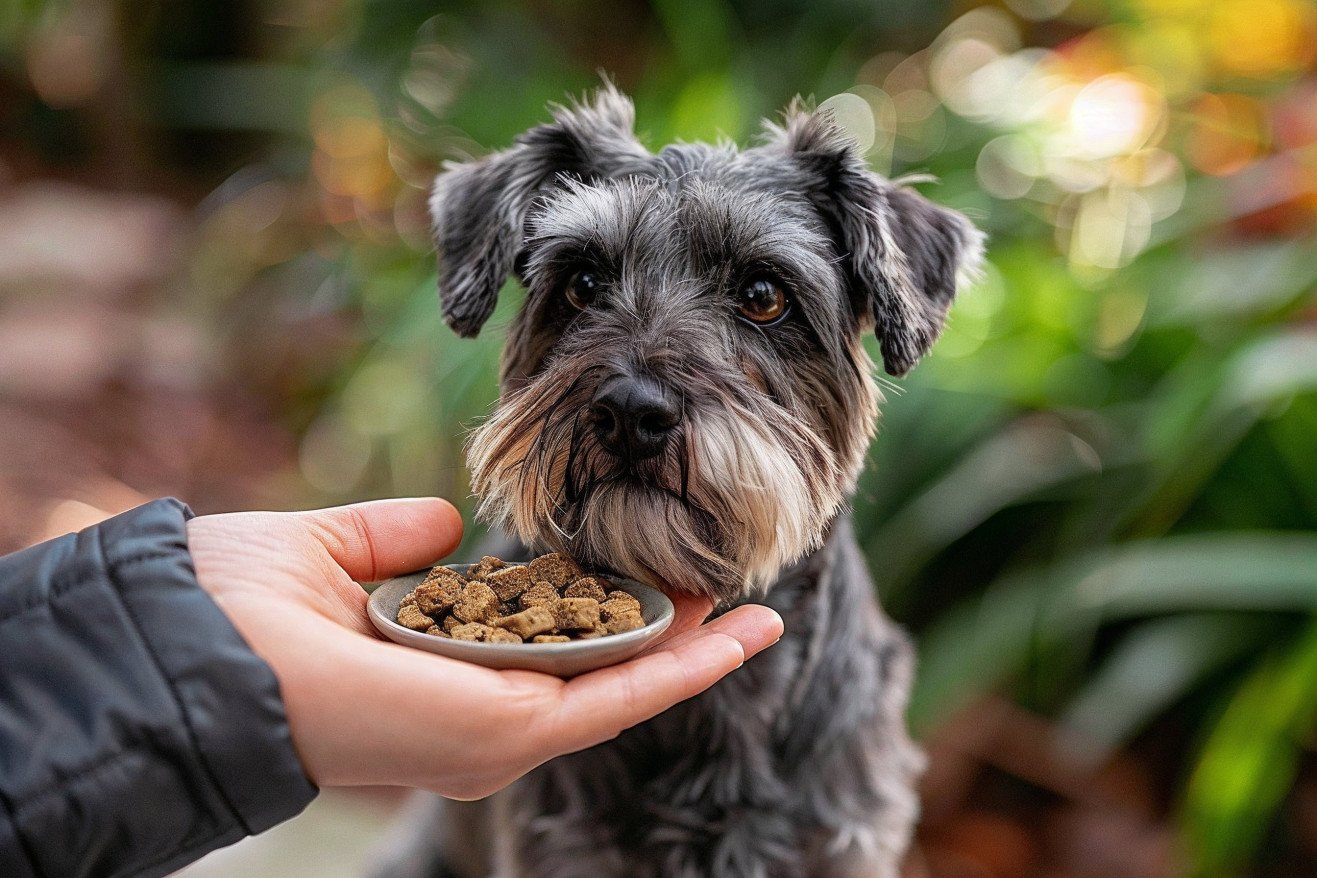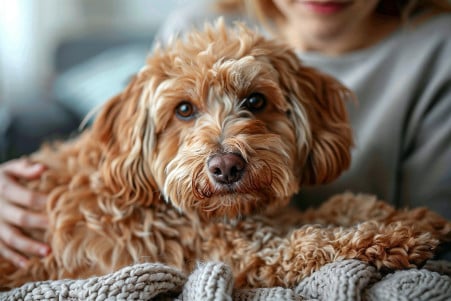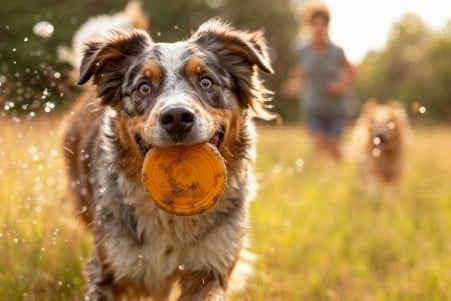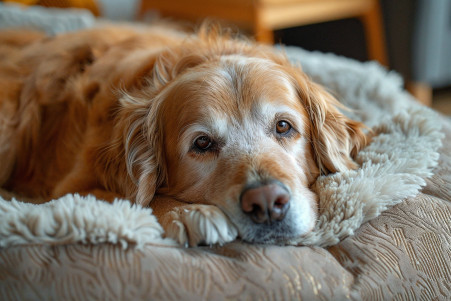How to Help Your Dog Gain Weight: Safe Methods for Weight Gain
2 May 2024 • Updated 1 May 2024

If your dog has been looking a little too skinny, there are many safe and healthy ways to help them gain weight. You can start by gradually increasing their calorie intake by feeding them high-quality dog food and fatty acid supplements. You can also encourage them to eat more by adding wet food toppers or home-cooked meals to their diet. Just make sure to keep everything in moderation - don't overfeed them, but do give them plenty of delicious, high-calorie treats.
In order to make sure this article is as accurate as possible, we have broken down the information based on advice from veterinarians and studies on dog nutrition and weight gain. With the help of experts, we will cover how many calories your dog should be eating, the best macronutrient ratios, and the most important high-calorie foods to include in their diet. We will also provide you with practical advice on how to safely change your dog's diet, how to track their weight gain, and how to make sure they stay active as they gain weight.
How can I help my dog gain weight in a healthy way?
How to Tell If Your Dog Is Underweight
The first step in helping your dog reach a healthy weight is recognizing that they are underweight. According to DogTime, some visual signs include being able to see your dog's individual rib bones when you look at them from the side. You should also be able to see a clear tuck in their abdomen when you look at them from the side, and a clear curve between their hips and ribs when you look at them from above. In addition, you may be able to see their hip and spine bones. Another sign of being underweight is a coat that is dry and lacks luster.
Being underweight can lead to a number of health problems for your dog. According to Maryland Veterinary Surgical Services, these include a compromised immune system, lethargy, muscle atrophy, organ failure, and an increased susceptibility to disease. Therefore, it's important to address being underweight as soon as possible.
While you can look for some of these signs at home, it's important to see your vet. They can assess your dog's body condition score and make sure there are no underlying medical issues that are causing your dog to lose weight or not eat. They will also ask you about your dog's eating habits, including how much food they eat and how often, as well as their activity level to help determine the cause.
In addition, it's a good idea to weigh your dog regularly, according to The Farmer's Dog. This will help you catch any changes in their weight early. You should also be on the lookout for any changes in your dog's appetite or energy levels. With the help of your vet and a personalized diet, you can help your dog reach a healthy weight.
Changing Your Dog's Diet to Help Them Gain Weight
According to Rogue Pet Science, the most important thing to remember when trying to help your dog gain weight is to gradually increase their calorie intake. The company suggests that you switch to a high-quality, nutrient-dense dog food that is specifically formulated for weight gain or active dogs. These calorie-dense foods are made to help your dog gain weight in a way that is both healthy and sustainable.
Just Food For Dogs also recommends adding wet food toppers or even homemade food to your dog's diet to increase the calorie and nutrient density. For example, their Beef & Russet Potato and Lamb & Brown Rice recipes are both high in protein and fat, which can help your dog gain weight.
In addition, it can be helpful to feed your dog smaller, more frequent meals, according to Purina. This will help ensure that your dog is getting the extra calories they need on a consistent basis without overloading their digestive system.
If you are switching to a new, higher-calorie food, make sure that you do so gradually to avoid any stomach issues. Keep a close eye on your dog's weight gain and adjust their portion sizes as needed to make sure that they are gaining the weight that they need to. With the right diet and some patience, you can help your underweight dog get back to a healthy weight.
Adding High-Calorie Supplements and Snacks
On top of changing up your dog's food, adding high-calorie supplements and snacks can help ensure your dog is getting the extra nutrients they need to gain weight. According to The Honest Kitchen, supplements like fish oil and coconut oil can be used to provide essential fatty acids and extra calories. Meanwhile, Ready Cal from Under the Weather is a high-calorie supplement that's easy to administer and includes vitamins, minerals, and fatty acids to help dogs who are having trouble keeping weight on.
You can also add healthy, high-calorie snacks to your dog's diet, such as peanut butter, eggs, and sweet potatoes, according to Miracle Vet. However, make sure to add any new supplements or snacks to your dog's diet slowly and in moderation, and talk to your vet about the right amount to give your dog based on their specific health status and needs. This will help you make sure you're not giving your dog too much of a good thing, which could lead to digestive issues or even unwanted weight gain.
Exercise and Activity Level
It’s important to balance exercise and activity levels with the increased calorie intake to ensure that your underweight dog gains weight in a healthy way. According to the Service Dog Training School, this may mean reducing or modifying exercise for a period of time to allow for a calorie surplus that can support weight gain.
PetCube recommends focusing on low-impact exercise during the weight gain period, like short walks and light play. This will help your dog build muscle without burning too many calories. It’s also important to make sure your dog is in a calm, stress-free environment during mealtime, as Daily Paws notes that stress can affect a dog’s appetite.
As your dog starts to gain weight, you can slowly increase their activity level. This will ensure that the weight gain is healthy and sustainable and that you aren’t pushing your dog’s body too hard. With a good balance of food and exercise, you can help your underweight dog get back to a healthy, strong weight.
How to Monitor Progress and Identify Healthy Weight Gain
Keeping tabs on your dog's weight gain is important to make sure they're gaining weight in a healthy way. As noted by Horse & Hound, regular weigh-ins and body condition scoring can help you monitor your dog's progress. You'll want to see a slow, steady increase in weight rather than any sudden changes, which can be a sign of an underlying health problem, according to DogTime.
When you're assessing your dog's weight gain, it's important to rely on visual signs. As outlined by The Farmer's Dog, you should be able to see—rather than just feel—a healthy layer of muscle and fat covering your dog's ribs, spine, and hip bones. If you notice that your dog is gaining an excess amount of fat or retaining water, it could be a sign that there's an imbalance in their diet or exercise.
If you feel that your dog is gaining weight too quickly or too slowly, it's important to talk to your vet. They can help you make adjustments to your dog's diet and exercise to ensure that they're gaining weight at a healthy, steady rate. It's also important to make sure you're taking your dog to the vet for regular check-ups throughout the process, as noted by Horse & Hound, to make sure that your dog stays healthy and safe.
Conclusion: How to Help Your Dog Reach a Healthy Weight
It takes a well-rounded plan to help an underweight dog gain weight in a healthy way. This includes slowly increasing the number of calories they eat each day, which can be done by feeding them a high-quality, nutrient-dense dog food that’s specifically designed to help dogs gain weight. You can also give them high-calorie treats and supplements, but it’s important to talk to your vet about how much you should give them.
It’s also important to make sure that your dog is getting the right amount of exercise. This means that you may need to cut back on high-intensity exercise for a while to make sure that your dog is in a calorie surplus, but you can still make sure that they get some exercise by taking them on low-impact walks. You should also make sure that you’re keeping a close eye on your dog’s weight and body condition so that you can make changes to their plan if they’re not gaining weight.
Finally, make sure that you’re working with your vet throughout this process. Not only can they help you figure out why your dog is underweight, but they can also help you come up with a plan that’s tailored to your dog’s specific needs. With the right plan and a little bit of time, you can help your dog get back to a healthy weight and live a long and healthy life.


